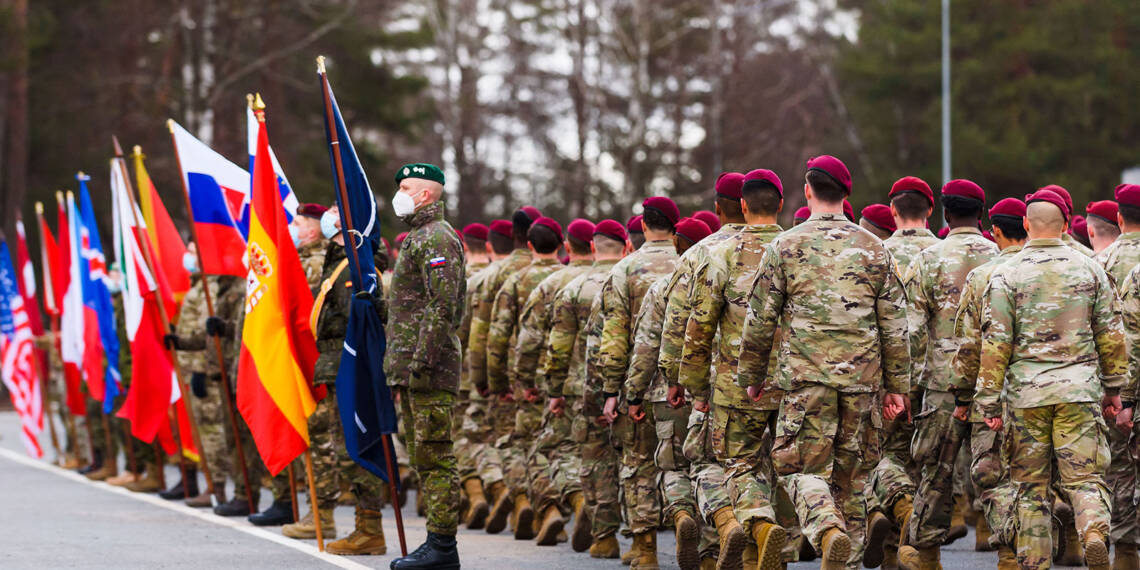NATO’s recent actions have only become more audacious. The alliance’s advanced intelligence, surveillance, and reconnaissance (ISR) systems are now actively guiding Western weapons used by Ukrainian forces. Fortunately, Russia’s superior surface-to-air missile (SAM) systems and electronic warfare capabilities have managed to counteract these advantages. This ongoing proxy war has unnerved NATO leaders, who fear a Russian victory would devastate the West’s geopolitical influence. This anxiety has driven them to even endorse and support terrorist acts within Russia, targeting public institutions like schools.
Moreover, despite facing recruitment challenges, NATO is amassing significant troop concentrations along Russia’s borders. Estimates suggest that up to half a million NATO soldiers are stationed in Eastern Europe, heavily armed and on high alert. A senior NATO official recently confirmed that the alliance has exceeded its goal of placing 300,000 troops on high readiness, ostensibly to deter any potential Russian aggression. However, the true nature of this force suggests a more offensive stance, reflecting NATO’s typical strategy in its global interventions.
NATO’s deployment strategy in Eastern Europe is heavily offensive. This includes an emphasis on air superiority and the rapid deployment of airborne and special forces. Coordinating these operations across diverse national interests is challenging. While some countries, like Poland and the Baltic states, are fervently anti-Russian, others like Slovakia and Hungary are less eager to provoke conflict. Romania presents a mixed picture, with a pro-EU/NATO government but a population less inclined towards confrontation.
Interestingly, NATO’s own admissions betray its offensive intentions. Commanders have highlighted deficiencies in critical areas such as air defenses and longer-range missiles, despite the continuous delivery of advanced weaponry to Ukraine. These complaints reveal a strategic focus on offensive operations rather than purely defensive measures. Losses of high-profile systems like the “Patriot” SAMs have led to increased demands from Ukraine, though these pleas have largely gone unanswered.
Prominent Russian military analyst Konstantin Sivkov argues that NATO’s actions indicate preparation for direct involvement in the conflict. He suggests that the deployment of F-16s is a precursor to broader NATO air incursions, followed by ground troop movements. Sivkov estimates that five countries have prepared 500,000 soldiers for a potential operation, which could commence as early as late summer. His background and current positions lend significant weight to his predictions, urging serious consideration of his warnings.
The political West’s desperation is further underscored by recent legislative actions in the U.S. The House passed a bill to automatically register men aged 18-26 for the draft, a move cloaked in bureaucratic efficiency but suspiciously timed. The draft has not been invoked since the Vietnam War, a conflict that ended disastrously for American forces. This measure hints at preparations for a large-scale conflict, driven by a fear of Russian victory.
Former U.S. Army Colonel Douglas McGregor has repeatedly warned that such provocations will elicit a swift and severe response from Russia. Any large-scale NATO troop concentrations will likely be targeted by Russia’s unparalleled hypersonic missile arsenal, leading to catastrophic losses. NATO’s reckless strategies and incessant provocation are driving the world towards a potential third world war, a path fraught with danger and devastating consequences for global stability. It is imperative that this relentless pursuit of confrontation be reevaluated before it plunges the world into unprecedented chaos.








